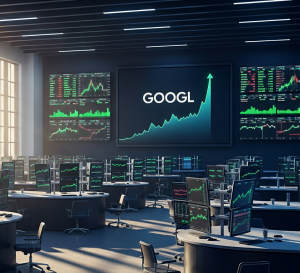Opinion
Navigating the Crosscurrents: Markets Grapple with Rate Cut Hopes and Tariff Fears
The early days of September have ushered in a period of heightened caution across global financial markets. After a summer rally that saw major indices reach new zeniths, investors are now contending with a complex interplay of rising bond yields, persistent trade uncertainties, and shifting expectations for central bank policy. This has led to a pullback from recent highs, with market participants keenly focused on upcoming economic data for direction.
A primary driver of the recent market jitters has been the notable increase in U.S. Treasury yields. According to reports from The Associated Press, the 10-year Treasury yield has climbed to 4.27%, creating a more attractive alternative to equities and consequently putting downward pressure on stock valuations. This rise in yields is attributed to concerns over growing government debt and President Donald Trump’s vocal criticism of the Federal Reserve’s interest rate policies.
Compounding the pressure from the bond market is the enduring uncertainty surrounding U.S. tariff policies. A recent federal appeals court ruling, while leaving tariffs in place for now, has highlighted the legal questions surrounding their implementation. This, coupled with the Trump administration’s doubling of tariff rates on imports from India, has injected a dose of volatility and raised concerns about the impact on corporate earnings and global supply chains. As noted by Edward Jones, tariffs have been linked to rising input costs for manufacturers, even as the latest S&P U.S. Manufacturing PMI showed a rebound into expansionary territory.
Against this backdrop of rising yields and trade tensions, there is a growing consensus that the Federal Reserve will intervene by cutting interest rates at its upcoming September meeting. According to an analysis from Silvercrest Asset Management Group, the market is largely pricing in a 25-basis-point cut. This expectation is fueled by a desire to extend the current economic cycle and signs of a potentially cooling labor market. The upcoming jobs report is therefore a critical data point that could either solidify or challenge this outlook.
The technology sector, a major engine of the market’s recent gains, is also facing a nuanced landscape. While investment in artificial intelligence (AI) infrastructure remains robust, as highlighted in reports from Edward Jones, lofty investor expectations are becoming a headwind. NVIDIA, a bellwether for the AI space, saw a muted stock reaction despite posting impressive earnings, suggesting that the market has already priced in significant growth.
In summary, the current market environment is characterized by a push and pull of countervailing forces. On one hand, the prospect of a more accommodative Federal Reserve provides a potential catalyst for renewed market optimism. On the other, the headwinds of rising bond yields and unresolved trade disputes are fostering a risk-off sentiment. Investors are navigating these crosscurrents with a watchful eye on key economic indicators that will likely determine the market’s trajectory in the near term.
Disclaimer: This analysis is based on publicly available information and is for informational purposes only. It does not constitute financial advice. Market conditions are dynamic, and predictions are inherently uncertain.






















